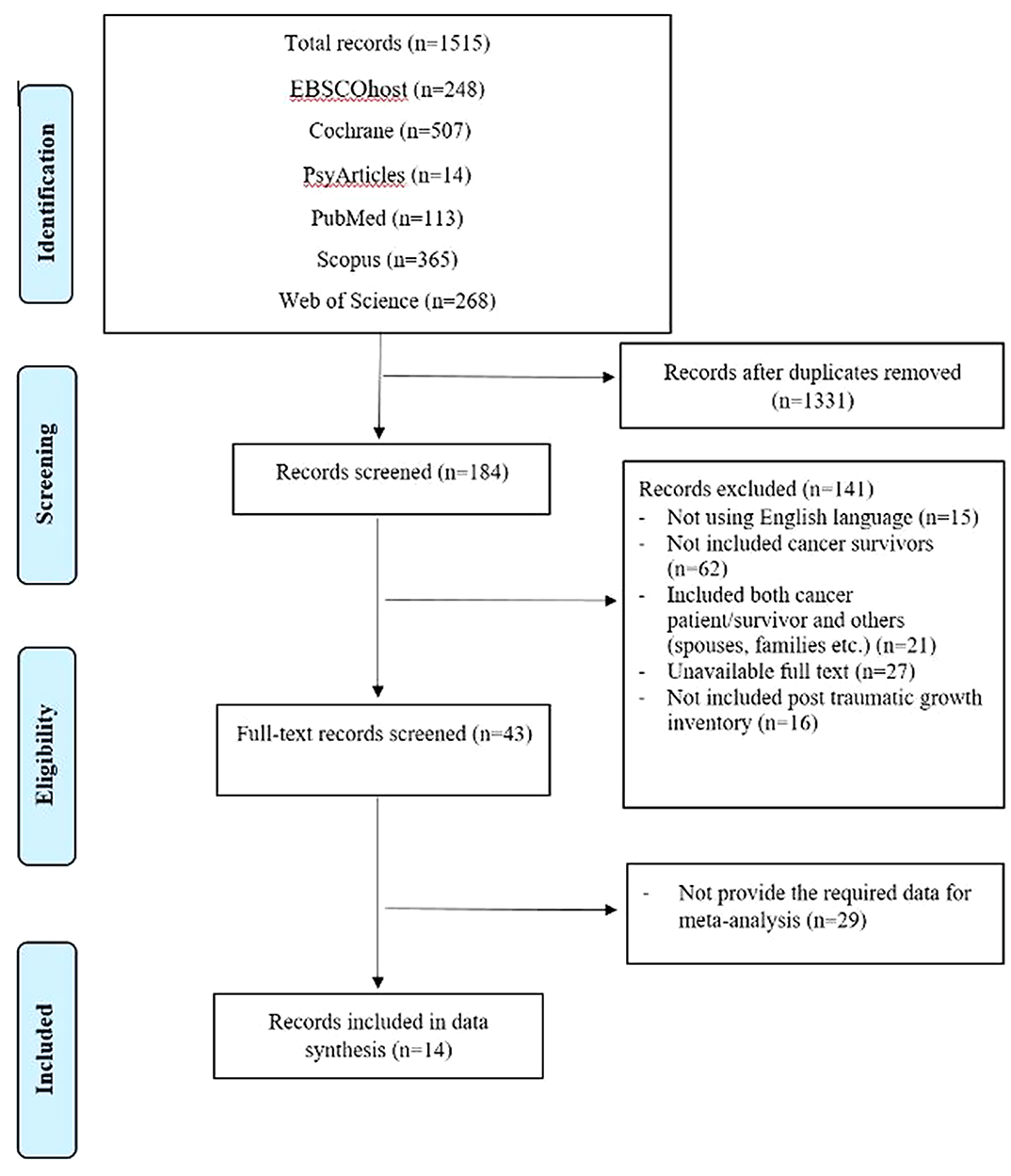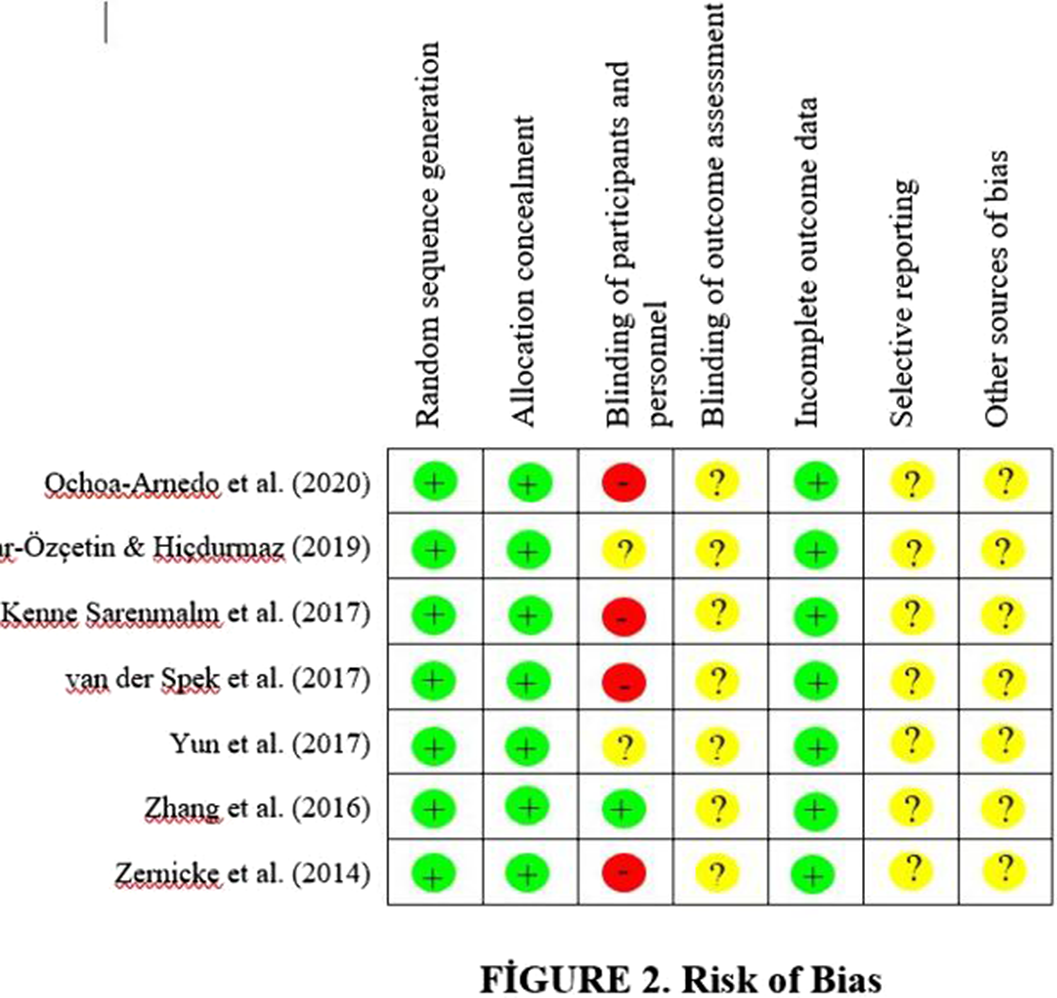24 results
Posttraumatic growth in young adults with parents diagnosed with cancer: Application of the self-regulation model
-
- Journal:
- Palliative & Supportive Care / Volume 23 / 2025
- Published online by Cambridge University Press:
- 08 November 2024, e5
-
- Article
-
- You have access
- Open access
- HTML
- Export citation
Resilience Mediates the Relationship Between Parental Attachment and Posttraumatic Growth in Adolescents: A Longitudinal Study
-
- Journal:
- Disaster Medicine and Public Health Preparedness / Volume 17 / 2023
- Published online by Cambridge University Press:
- 26 April 2023, e381
-
- Article
- Export citation
How clinicians can support posttraumatic growth following psychosis: a perspective piece
-
- Journal:
- Irish Journal of Psychological Medicine , First View
- Published online by Cambridge University Press:
- 17 February 2023, pp. 1-6
-
- Article
-
- You have access
- Open access
- HTML
- Export citation
Chapter 2 - Reproductive Psychology and Fertility Counseling
- from I - Introduction
-
-
- Book:
- Fertility Counseling: Clinical Guide
- Published online:
- 24 November 2022
- Print publication:
- 08 December 2022, pp 31-38
-
- Chapter
- Export citation
Chapter 4 - Fertility Counseling for Couples
- from II - Therapeutic Approaches
-
-
- Book:
- Fertility Counseling: Clinical Guide
- Published online:
- 24 November 2022
- Print publication:
- 08 December 2022, pp 49-58
-
- Chapter
- Export citation
Effectiveness of Posttraumatic Growth Interventions among Cancer Survivors: A Systematic Review and Meta-analysis
-
- Journal:
- European Psychiatry / Volume 65 / Issue S1 / June 2022
- Published online by Cambridge University Press:
- 01 September 2022, pp. S139-S140
-
- Article
-
- You have access
- Open access
- Export citation
Latent Profiles of Posttraumatic Growth: 17 years After the Bam Earthquake in Iran
-
- Journal:
- Disaster Medicine and Public Health Preparedness / Volume 17 / 2023
- Published online by Cambridge University Press:
- 25 March 2022, e127
-
- Article
- Export citation
Posttraumatic growth in palliative care patients and its associations with psychological distress and quality of life
-
- Journal:
- Palliative & Supportive Care / Volume 20 / Issue 6 / December 2022
- Published online by Cambridge University Press:
- 14 February 2022, pp. 846-853
-
- Article
-
- You have access
- Open access
- HTML
- Export citation
Does bipolar disorder cause posttraumatic growth? Relationship between psychological resistance in patients with bipolar disorder and caregivers
-
- Journal:
- European Psychiatry / Volume 64 / Issue S1 / April 2021
- Published online by Cambridge University Press:
- 13 August 2021, p. S193
-
- Article
-
- You have access
- Open access
- Export citation
The interaction effect between gender and profession in posttraumatic growth among hospital personnel
-
- Journal:
- Primary Health Care Research & Development / Volume 21 / 2020
- Published online by Cambridge University Press:
- 24 September 2020, e35
-
- Article
-
- You have access
- Open access
- HTML
- Export citation
Making and Receiving Offers of Help on Social Media Following Disaster Predict Posttraumatic Growth but not Posttraumatic Stress
-
- Journal:
- Disaster Medicine and Public Health Preparedness / Volume 15 / Issue 4 / August 2021
- Published online by Cambridge University Press:
- 30 April 2020, pp. 484-490
-
- Article
-
- You have access
- Open access
- HTML
- Export citation
Meaning and Purpose (MaP) therapy II: Feasibility and acceptability from a pilot study in advanced cancer
-
- Journal:
- Palliative & Supportive Care / Volume 17 / Issue 1 / February 2019
- Published online by Cambridge University Press:
- 02 January 2019, pp. 21-28
-
- Article
- Export citation
The Mediating Roles of Acceptance and Cognitive Reappraisal in the Relation Between Hope and Posttraumatic Growth Among Adolescents After the Ya'an Earthquake
-
- Journal:
- Journal of Pacific Rim Psychology / Volume 12 / 2018
- Published online by Cambridge University Press:
- 11 June 2018, e25
- Print publication:
- 2018
-
- Article
-
- You have access
- Open access
- HTML
- Export citation
Examining cancer survivorship trajectories: Exploring the intersection between qualitative illness narratives and quantitative screening instruments
-
- Journal:
- Palliative & Supportive Care / Volume 16 / Issue 6 / December 2018
- Published online by Cambridge University Press:
- 28 December 2017, pp. 712-718
-
- Article
- Export citation
Post-Traumatic Growth Following Politically Motivated Acts of Violence: 10 Years Post Injury
-
- Journal:
- The Australian Journal of Rehabilitation Counselling / Volume 23 / Issue 1 / July 2017
- Published online by Cambridge University Press:
- 10 May 2017, pp. 1-18
-
- Article
- Export citation
High-level construal benefits, meaning making, and posttraumatic growth in cancer patients
-
- Journal:
- Palliative & Supportive Care / Volume 14 / Issue 5 / October 2016
- Published online by Cambridge University Press:
- 20 October 2015, pp. 510-518
-
- Article
- Export citation
Posttraumatic growth and demoralization after cancer: The effects of patients' meaning-making
-
- Journal:
- Palliative & Supportive Care / Volume 13 / Issue 5 / October 2015
- Published online by Cambridge University Press:
- 05 March 2015, pp. 1449-1458
-
- Article
- Export citation
Posttraumatic Growth and Spirituality After Brain Injury
-
- Journal:
- Brain Impairment / Volume 12 / Issue 2 / 01 September 2011
- Published online by Cambridge University Press:
- 21 February 2012, pp. 82-92
-
- Article
- Export citation
Enhanced Appreciation of Life Following Acquired Brain Injury: Posttraumatic Growth at 6 Months Postdischarge
-
- Journal:
- Brain Impairment / Volume 12 / Issue 2 / 01 September 2011
- Published online by Cambridge University Press:
- 21 February 2012, pp. 93-104
-
- Article
- Export citation
Growth in a ‘New World’: Case Studies of Peer Leader Experiences in the STEPS Program for People With Acquired Brain Injury
-
- Journal:
- Brain Impairment / Volume 12 / Issue 2 / 01 September 2011
- Published online by Cambridge University Press:
- 21 February 2012, pp. 152-164
-
- Article
- Export citation



